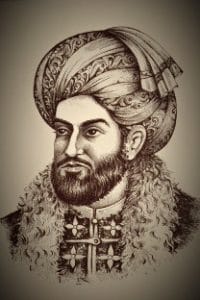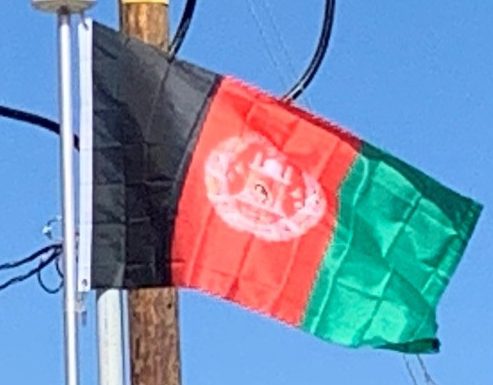In 1738, Nader Shah and his forces captured Kandahar, the last Hotak stronghold, from Shah Hussain Hotak, at which point the incarcerated 16-year-old Ahmad Shah Durrani was freed and made the commander of an Afghan regiment. Soon after the Persian and Afghan forces invaded India. By 1747, the Afghans chose Durrani as their head of state. Durrani and his Afghan army conquered much of present-day Afghanistan, Pakistan, the Khorasan and Kohistan provinces of Iran, and Delhi in India. He defeated the Indian Maratha Empire, and one of his biggest victories was the 1761 Battle of Panipat.

In October 1772, Durrani died of a natural cause and was buried at a site now adjacent to the Shrine of the Cloak in Kandahar. He was succeeded by his son, Timur Shah, who transferred the capital of Afghanistan from Kandahar to Kabul in 1776. After Timur’s death in 1793, the Durrani throne passed down to his son Zaman Shah, followed by Mahmud Shah, Shuja Shah and others.
The Afghan Empire was under threat in the early 19th century by the Persians in the west and the Sikh Empire in the east. Fateh Khan, leader of the Barakzai tribe, had installed 21 of his brothers in positions of power throughout the empire. After his death, they rebelled and divided up the provinces of the empire between themselves. During this turbulent period, Afghanistan had many temporary rulers until Dost Mohammad Khan declared himself emir in 1826. The Punjab region was lost to Ranjit Singh, who invaded Khyber Pakhtunkhwa and in 1834 captured the city of Peshawar. In 1837, during the Battle of Jamrud near the Khyber Pass, Akbar Khan and the Afghan army failed to capture the Jamrud fort from the Sikh Khalsa Army, but killed Sikh Commander Hari Singh Nalwa, thus ending the Afghan-Sikh Wars. By this time the British were advancing from the east and the first major conflict during “The Great Game” was initiated.
British Influence and Independent Kingdom:
In 1838, the British marched into Afghanistan and arrested Dost Mohammad, sent him into exile in India and replaced him with the previous ruler, Shah Shuja. Following an uprising, the 1842 retreat from Kabul of British-Indian forces and the annihilation of Elphinstone’s army, and the Battle of Kabul that led to its recapture, the British placed Dost Mohammad Khan back into power and withdrew their military forces from Afghanistan. In 1878, the Second Anglo-Afghan War was fought over perceived Russian influence, Abdur Rahman Khan replaced Ayub Khan, and Britain gained control of Afghanistan’s foreign relations as part of the Treaty of Gandamak of 1879. In 1893, Mortimer Durand made Amir Abdur Rahman Khan sign a controversial agreement in which the ethnic Pashtun and Baloch territories were divided by the Durand Line. This was a standard divide and rule policy of the British and would lead to strained relations, especially with the later new state of Pakistan. Shia-dominated Hazarajat and pagan Kafiristan remained politically independent until being conquered by Abdur Rahman Khan in 1891-1896.
